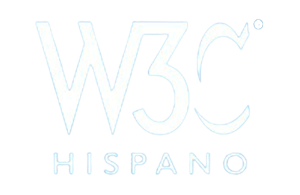In May 2017, the software company block.one announced the launch of a new blockchain platform: EOS. After a one-year funding period, in one of the longest and most profitable ICOs in history (over 4B USD), in June 2018 its mainnet was publicly launched.
EOS aims to achieve a massive adoption of decentralized applications (dApps, offered since 2015 in Ethereum) by improving its scalability. Therefore, we will briefly discuss this issue and its effects, before stepping into the functioning of EOS.
Currently, it is difficult to implement large-scale dApps using Ethereum. The issue of scalability is rooted in the simultaneous execution of smart contracts in every node of the network. Because of the disparity of computing power between them, the network itself imposes certain restrictions to accommodate a large number of nodes.
Designing dApps that demand a high interaction with the blockchain may be unfeasible, since the Ethereum network only manages to process about 15 transactions per second (TPS), even though this is superior to other networks such as Bitcoin (3 TPS). Furthermore, Ethereum prioritizes its execution by associating a fee to each transaction. And as the nodes process the most lucrative transactions first, in times of congestion the fees go up, resulting in dApps having an uncertain runtime and cost. Which is unacceptable for certain use cases.
As consensus algorithm, EOS uses the so-called Delegated Proof of Stake (DPoS), in which block production is not fully open. In the case of EOS, it is limited to 21 nodes in the network, known as Block Producers (BPs). The selection of said nodes is made by continuous voting, where the holders of native cryptocurrency (EOS) have a voting power proportional to their balance.
This system also seeks to reward the nodes that contribute with something more to the network, not just choosing the BPs with the best capacity to cover their needs. This aims to encourage contributions to the development of wallets, of distributed applications, and increase the educational content available for the community. EOS does not forget either to implement more transparent and diverse mechanisms that improve the governance of the network and the tranquility of its users: for example, it would be possible to recover access to hacked accounts, or block malicious actors.
Having a limited number of BPs means that EOS presents notable differences with respect to other blockchains, and these characteristics are some of its main hallmarks.
One of them is that the creation of blocks is not subjected to a competition between nodes. The network can be forced to produce blocks at the desired pace, which allows creating them every 0.5 seconds. To put that into perspective, the Bitcoin network adjusts its difficulty to produce blocks every 10 minutes, and Ethereum every 15 seconds. Also, taking into account that the BPs are not dedicated to solve mathematical problems as in PoW, the useful computing power of the EOS network is considerably higher: currently being able to handle around 4000 TPS.
Another remarkable difference is how EOS addresses the fees that users usually have to pay for the use of a blockchain. In classical blockchain platforms, the purpose of these rates is twofold: on the one hand to limit the operations of writing in the registry (or use of computing resources) so that users do not degrade the network with malicious attacks, and on the other hand, fees also reward block producing nodes.
However, EOS avoids the excessive use of its network without fees. How does it do it ?, Forcing its users to reserve with cryptocurrency storage space, computing power and bandwidth as needed. In addition, when it is no longer needed, the reserved space can be resold to other users. In this way, a developer can ensure sufficient resources for his smart contracts, but with the possibility of recovering the investment.
This system also allows the creator of the dApp to provide its users with the necessary resources to execute it. The user would no longer be required to register in the network or have a cryptocurrency to interact with dApps, reducing important barriers to access. This opens the door to the development of truly free dApps (without being obligatory, since the creator can deploy a payment model to make his creation profitable).
We can conclude that EOS expands the real field of application of blockchain technologies, by making possible its use in cases that require a real-time interaction with the blockchain registry, and even without cost for the end user if so preferred.
To better illustrate the described features we invite you to try this IoT demo, developed by CTIC, which registers in the EOS blockchain the readings of temperature and humidity sensors located in an enclosure, to then graphically visualize them.

EOS facilitates the development of advanced blockchain solutions for use cases with real-time data acquisition, in which we already work, something difficult to approach with Ethereum and, in practice, not very viable in platforms such as IOTA (theoretically ideal for IoT ).
Soon we will deal with more questions about this blockchain tool that we add to our factory.

Since the beginning of 2016, CTIC has been working on the BCCB project, a space for experimentation with blockchain technologies. If you are interested in more details about the different applications of this important innovation and how to approach them, please contact us.



